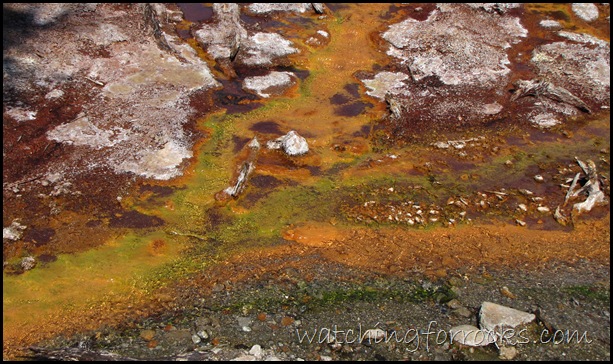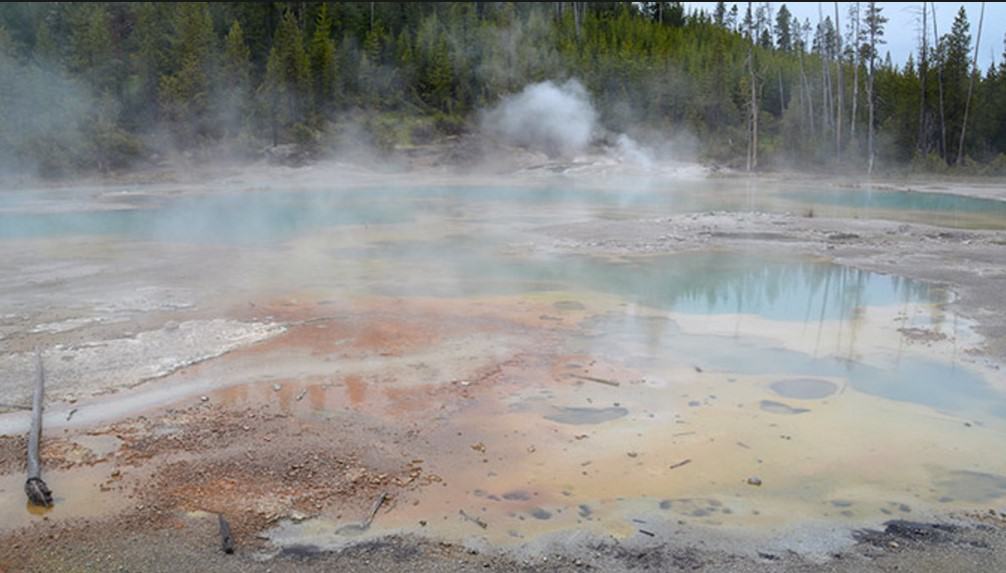It’s not easy to describe the wonder that is Norris Geyser Basin, and so I won’t even try. Words simply cannot do it justice. However, here are some photos and facts about this astonishing place.
 |
| Porcelain Basin in Norris Geyser Basin |
Norris is situated just outside the boundary of the third Yellowstone Caldera (640,000 years old) but is within the first and largest caldera which occurred 2.1 million years ago. Its location at the junction of three major faults makes this one of the most active earthquake areas of Yellowstone.
 |
| “Lambchop geyser” in the Porcelain Basin |
It is one of the hottest and most dynamic hydrothermal areas in the Park. Many of its hot springs and fumaroles (steam vents) have temperatures above the boiling point of water which at this elevation is around 200°F.
 |
| Black Growler steam vent |
Norris is also home to Echinus Geyser, the largest acidic geyser in the world. With an average pH of 3–4 its waters are almost as acidic as vinegar.
 |
| Echinus Geyser |
Echinus comes from the Greek word for spiny, the same root name (echinoderm) given to starfish and sea urchins. There is a resemblance, too, in the coating of spiny sinter deposits typical of these acid water conditions.

The stunning reds and yellows in the waters of Echinus Geyser are caused by iron oxide minerals being deposited along with the sinter. Arsenic compounds are also deposited by the hot water at Echinus.
 |
| Run-off at Echinus Geyser |
Microscopic, heat–loving organisms called thermophiles not only survive but thrive in these acidic waters of Norris Geyser Basin.







